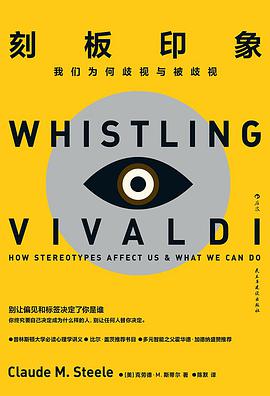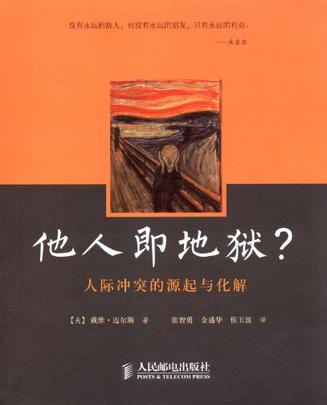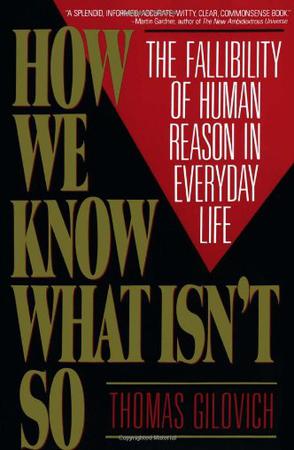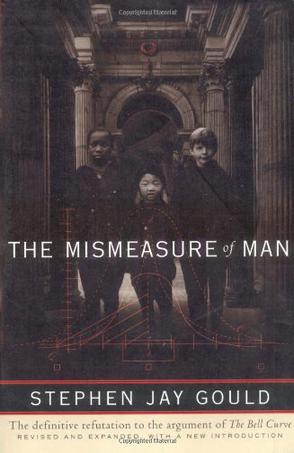欢迎来到相识电子书!
标签:偏见
-
刻板印象
别让偏见和标签决定了你是谁
◎ 编辑推荐
☆ 比尔·盖茨推荐书单
☆ 哈佛大学、斯坦福大学、普林斯顿大学、哥伦比亚大学教授一致推荐
☆ 美国常春藤盟校必读书目,长期名列亚马逊畅销榜
☆ “刻板印象威胁”研究先驱力作
☆ 普林斯顿大学校长 克里斯多夫•艾斯格鲁伯;多元智能之父、哈佛大学教育研究院教授 霍华德•加德纳 盛赞推荐
◎ 内容简介
《刻板印象》揭露了一个事实:我们生来戴着有色眼镜,同时又遭受着各种偏见。
斯蒂尔教授解释了在每个人生活中因身份认同感而产生的两难窘境,包括选修非裔美国人政治学课的白人学生成绩每况愈下,以及主修工程学的女学生为了是否参加以男性为主的专业会议而犹豫不决,证明刻板印象和负面标签显著限制了人们的表现。刻板印象无处不在,它成为我们的标志,成为我们的负担,有时使人努力过度,有时扼杀了自我本性。
还好,它并非不可战胜。本书深入剖析了身份认同感的形成因素和过程,展示了小小的标签如何发挥了强大的力量,最后总结出一套完整的应对计划,帮助你摆脱刻板印象的陷阱,重塑自己的身份,充分且自由地发挥天赋。
-
偏见心理学
《偏见心理学》主要介绍了偏见的概念、现象、理论和研究方法,最后讨论了应对偏见的一些措施。第一、第二章分别介绍了偏见的概念,以及我们身边的种种偏见现象。透过这两章,读者朋友们可以更加直观地体验到我们所生存的偏见世界,这也是我们合理认识偏见的第一步。第三、第四章 分别介绍了偏见的理论和研究方法,借此可以了解心理学家是如何认识和研究偏见的。第五章 讨论了应对偏见的一些措施,感兴趣的读者还可以根据自身实际情况灵活运用。 -
偏见
人是一种可塑性很强的动物,又是一种固执的、不容易改变原有观念的高等动物。从出生开始,我们被父母、他人、家庭、社会、历史所塑造,成年之后,我们虽然接受了更多更客观的信息,但我们对自我、对他人、对世界的看法却相对固定了,偏见也就在对自我、对他人、对世界的固定看法中诞生了。这些固定的看法让我们更快地适应了社会,但在一定程度上也给他人、给我们自己带来了更多痛苦。偏见是人类社会的普遍现象。从古到今、从此至彼,偏见莫不存在。偏见的核心是用一成不变、以偏概全的标准对人、事、物进行评价后产生的一种态度。在经济、政治、文化的互相作用下,偏见的形成有各种各样的原因,也使偏见的彻底消除变得困难重重。这本小书的内容包括偏见的典型实例(第一章)、历史溯源(第二章)、生活百态(第三章)、理论研究(第四章)以及减少偏见的负面影响(第五章)这几个方面。本书中把偏见更多地界定在消极偏见的基础上,因此你可以看到偏见给个体、给他人、给社会带来的负面影咆也会看到在不同的历史时期偏见的各种表现,更可以看到现在社会中无所不在的偏见现象。接下来,这本小书通过事例、结合理论来分析偏见的形成。在这本小书的最后,我们将一起面对偏见,在消极偏见的狂风中嗅得淡淡花香。而这些内容的目的,都是要还“偏见”一个真实而没有偏见的真相。 -
他人即地狱?
法国存在主义哲学家萨特在他的名剧《禁闭》中写道:“他人即地狱。”这句话形象地描述了人与人之间不可避免的矛盾冲突。我们在人际交往中自发地对他人产生偏见,有时会引发不同目的的攻击行为,甚至导致双方的冲突。在更广阔的人类社会中,冲突不仅存在于人与人之间,也存在于不同群体如种族、性别乃至国与国之间。 《他人即地狱?》节选自美国著名心理学家戴维·迈尔斯的超级畅销书《社会心理学》,这本在国外大学的心理学学生中几乎人手一册的书,集合了当今与我们的生活最为贴近的社会心理学中最优秀的成果。全书分为三个主题,“偏见:我们为何不喜欢他人”和“攻击行为:伤害他人”分析了人际关系中的丑陋一面:为什么我们不喜欢、甚至是鄙视彼此?我们在何时、为什么彼此伤害?在“冲突与和解”中,我们思考了社会冲突是如何发展的,以及公正和平地解决冲突的四C原则。 《他人即地狱?》兼具科学性与可读性,戴维·迈尔斯的文笔优美睿智,既适合社会心理学相关领域的专业人士阅读,即使对于没有心理学背景的读者,读起来也是引人入胜、发人深省的。 -
How We Know What Isn't So
From Publishers Weekly Sports fans who think that basketball players shoot in "hot streaks," and maternity nurses who maintain that more babies are born when the moon is full adhere to erroneous beliefs, according to Gilovich, associate professor of psychology at Cornell. With examples ranging from the spread of AIDS to the weight of Scholastic Aptitude Test scores, he skewers popular but mistaken assumptions. Faulty reasoning from incomplete or ambiguous data, a tendency to seek out "hypothesis-confirming evidence" and the habit of self-serving belief are among the factors Gilovich pinpoints in his sophisticated anaylsis. However, in the book's second half, his debunking of holistic medicine, ESP and paranormal phenomena is superficial and one-sided, marred by some of the very tendencies he effectively exposes in the "true believers." Copyright 1991 Reed Business Information, Inc. --This text refers to an out of print or unavailable edition of this title. From Kirkus Reviews The subtexts of this first-class critique of human (non)reason are that we all tell ourselves lies (at least some of the time)...that if you want to believe it's true, it is (faith healing, ESP)...that humans can't help seeing patterns where none exist (in clouds, in disastrous events, in gamblers' streaks). Furthermore, if you would like to learn more about how not to deceive yourself, you might take a course in one of the ``soft'' probabilistic sciences like psychology. This might be construed as self-serving, since Gilovich happens to teach psychology at Cornell. However, the point is well taken because such courses should expose students to a minimum of statistics--such as the law of regression, which says that when two variables are partially related, extremes in one variable are matched, on average, by less extreme variables in the other. (Children of tall parents are tall, but not as tall as their parents.) Gilovich attributes the general lack of appreciation of the law to ``the compelling nature of judgment by representation''--by which the predicted outcome should be as close to the data as possible: the son of a 6'5'' dad should be close to 6'5''. Gilovich also points to other pitfalls in reasoning, such as failure to record negative outcomes (how many times do you dream of an old friend and not bump into him the next day?). And he discusses deeper motives--e.g., fear of dying, prospects of power or immortality, and similar self-aggrandizing traits that fortify superstitions and the will to believe. Altogether, a satisfying splash of skepticism and reason in a world where the Lake Wobegon phenomenon--``the women are strong, the men are good-looking and all the children are above average''- -prevails. -- Copyright ©1991, Kirkus Associates, LP. All rights reserved. --This text refers to an out of print or unavailable edition of this title. -
The Mismeasure of Man
When published in 1981, The Mismeasure of Man was immediately hailed as a masterwork, the ringing answer to those who would classify people, rank them according to their supposed genetic gifts and limits. Yet the idea of biology as destiny dies hard, as witness the attention devoted to The Bell Curve, whose arguments are here so effectively anticipated and thoroughly undermined. In this edition, Stephen Jay Gould has written a substantial new introduction telling how and why he wrote the book and tracing the subsequent history of the controversy on innateness right through The Bell Curve. Further, he has added five essays on questions of The Bell Curve in particular and on race, racism, and biological determinism in general. These additions strengthen the book's claim to be, as Leo J. Kamin of Princeton University has said, "a major contribution toward deflating pseudo-biological 'explanations' of our present social woes."
热门标签
下载排行榜
- 1 梦的解析:最佳译本
- 2 李鸿章全传
- 3 淡定的智慧
- 4 心理操控术
- 5 哈佛口才课
- 6 俗世奇人
- 7 日瓦戈医生
- 8 笑死你的逻辑学
- 9 历史老师没教过的历史
- 10 1分钟和陌生人成为朋友






